 I'm conflicted. You strangled my husband, but you're the first man who does what I want without me nagging him.   
Above: a U.S. six sheet poster and zoom followed by an insert poster for the all-time film noir classic Double Indemnity. If you don't like this one, you don't like movies. It premiered in the U.S.—at a special event in Norman, Oklahoma of all places—today in 1944. We shared its West German poster here, joked about one of its classic sequences here, wrote about its modernized remake Body Heat here, and shared its Australian poster and covered the film in detail here.
 Stanwyck and MacMurray make a dangerous bet 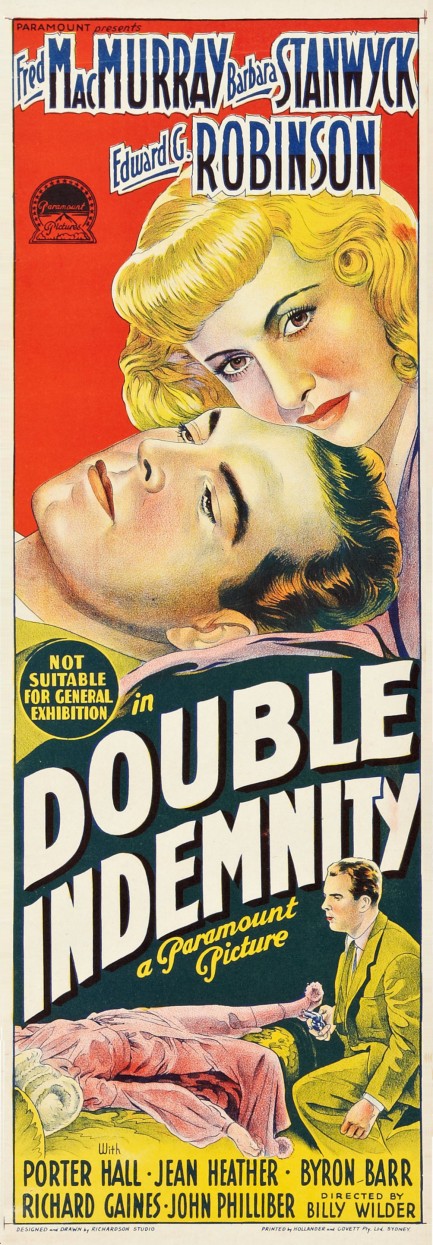
There are still, after all these years, important classic films we've never discussed in detail. We can now cross Double Indemnity off the list. The movie starred Barbara Stanwyck and Fred MacMurray, and we've looked at its West German poster, had fun with one of its promo images, and talked about its ingenious quasi-remake, but never actually gotten to the movie itself. Well, here we are, and now the question is can we tell you anything you don't already know? Possibly not, but let's start with the Australian daybill, which you see above. It isn't the usual poster you find online, so that's something, anyway.
The movie begins with MacMurray making a confession, then slides into flashback to explain his crime. He plays an insurance salesman for Pacific All Risk who quickly realizes that Stanwyck's interest in secretly purchasing a life insurance policy on her husband is for the purposes of murder and claimant fraud. He resists the scheme at first but Stanwyck convinces him. How? All we see are a few kisses but the answer has to be sex. McMurray is a guy who has experience with women and is so confident with them he's almost glib. He wouldn't agree to murder a guy just because someone is a good kisser.
Thus, temptation nudges him, unseen sex tips him over the edge, and from there he and Stanwyck are off and running with their murder plot. Eventually Stanwyck's husband is found dead on a train track, presumably after falling off the observation car of the Los Angeles-Santa Barbara express, and the crime seems perfect, except the insurance policy that will pay $100,000 brings a tenacious investigator into the picture. That would be Edward G. Robinson in another great performance, and he immediately latches onto an anomaly—Stanwyck's husband didn't file an insurance claim when he broke his leg weeks earlier. Why would a guy who had accident insurance not make a claim? Maybe he didn't know he had accident insurance.
Robinson's role and performance make the movie. He pulls on the single hanging thread that unravels the entire murder plot, and when it starts to come apart it does so almost too fast to believe. There's revelation upon revelation, even reaching years back to the time that Stanwyck's husband was married to another woman, and Stanwyck was that woman's nurse. It's this latter half that makes Double Indemnity a top classic—though make no mistake, it's a film noir clinic even from its first frames, in terms of visuals, structure, music, and direction from Billy Wilder. But when MacMurray's situation deteriorates so quickly and so uncontrollably in the last half, you almost experience the same vertigo and helplessness his character must feel.
Double Indemnity was nominated for seven Academy Awards, and as usual for the Oscars, was beaten in most of its categories by a film that ended up having far less influence—the Bing Crosby musical Going My Way. But time tells the tale. Nobody is calling Going My Way one of the best films ever made, but Double Indemnity was certainly a top ten film noir, and was influential far beyond its niche. The movie opened in the U.S. in the late spring of 1944 and finally reached Australia to dazzle and dismay audiences today, December 1, that same year. 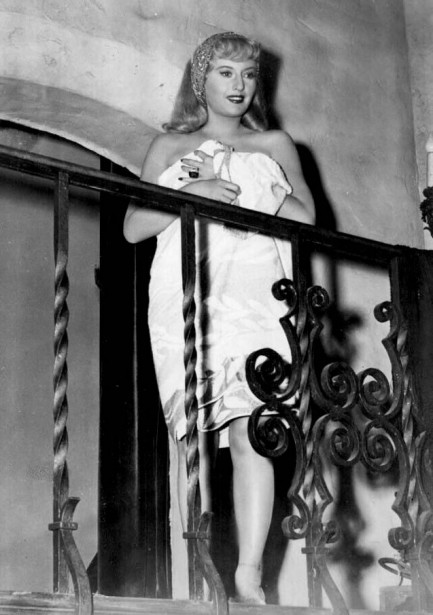 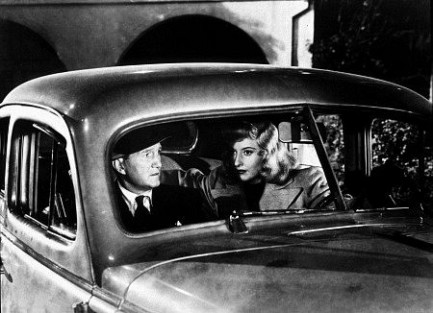 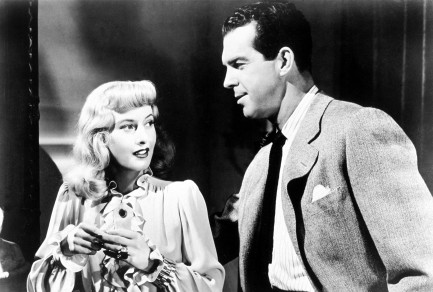 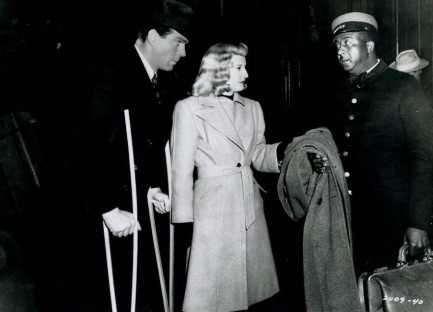 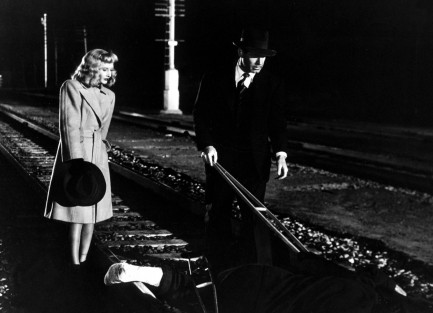 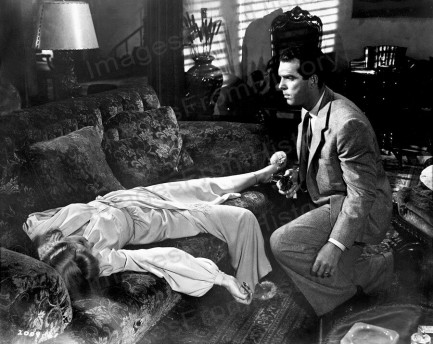 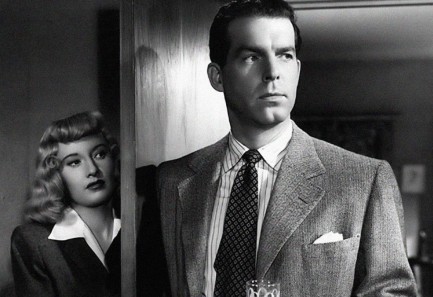 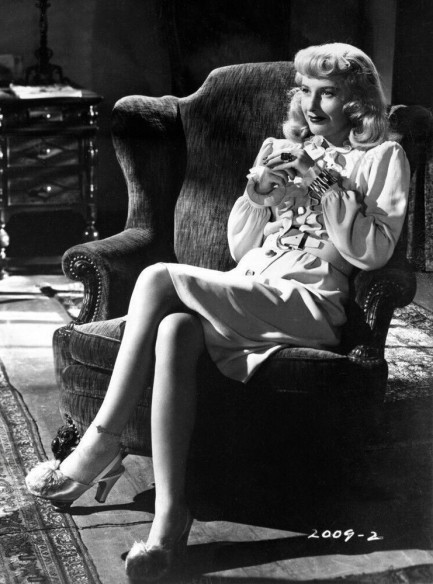
 Murder most premeditated. 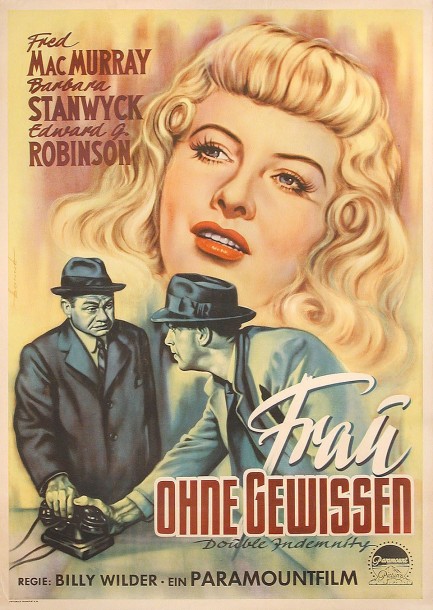
Above is a poster painted by German artist Heinz Bonne for the U.S. film noir classic Double Indemnity, starring Barbara Stanwyck and Fred MacMurray as lovers who try to pull off a murder and daring insurance fraud but may not be quite as smart or lucky as needed. We'll hopefully get back to Bonne a little later. Double Indemnity premiered in the U.S. in 1944, but made it to Germany—West Germany actually—as Frau ohne Gewissen, or “woman without a conscience,” six years later, today in 1950.
 I call this one Robbie, the second one Chip, and the third one... well I forget. But they're all great! 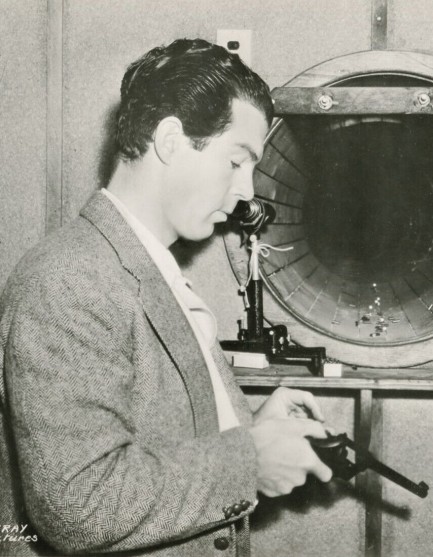 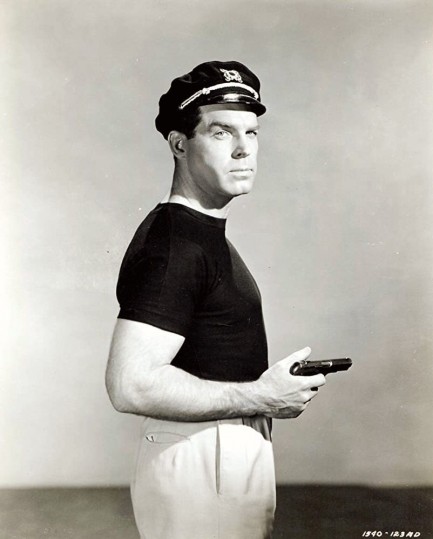 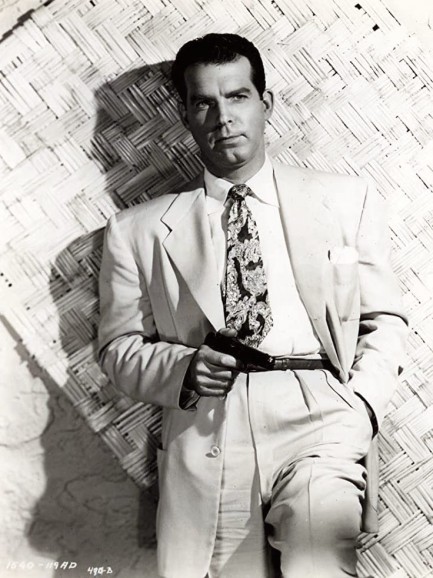
Above are three promo photos of U.S. actor Fred MacMurray, two from his film noir Singapore, and one of unknown provenance. While MacMurray made his name in deadly serious films such as Double Indemnity and Pushover, many fans remember him better as the affable father from the television series My Three Sons, on which he starred from 1960 until 1972, as the show chronicled the life of a widower and his three sons Robbie, Chip, and Mike. Why was he a widower? We don't think it's ever revealed, but perhaps a firearms “accident” had something to do with it.
 The Florida heat cooks up trouble in Lawrence Kasdan's masterful neo-noir. 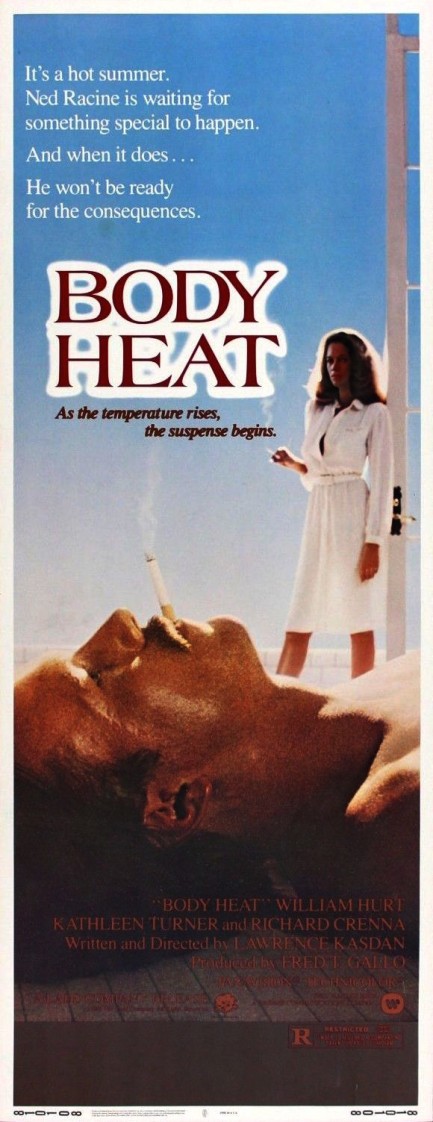
Kill your husband for you? Sure, I can make that happen, I guess. Spousal murder is a film noir and pulp fiction plot tentpole, and the motivation for trying something so risky generally revolves around sex. But during the time the film noir and pulp fiction genres were extant their makers could only imply it. The neo-noir thriller Body Heat, which premiered in the U.S. today in 1981, fixed that problem, as not-so-bright lawyer Ned Racine, played by William Hurt, is seduced into a murder plot by whip smart bombshell Matty Walker, played by Kathleen Turner in her cinematic debut. Body Heat is an apt title. The setting is South Florida during a heat wave, with most of the action set in the mythical towns of Pinehaven and Miranda Beach. Every frame of the movie seems to vent steam. There's copious slippery sex and nudity, all of it important to the plot. When the pair have their electric first encounter Hurt pulls off Turner's panties with an expression of pure awe on his face and intones, “So wet.” For just that moment he wonders if it's really him turning on a woman that much. And he's right to wonder, because it isn't him. What's turning her on is money.
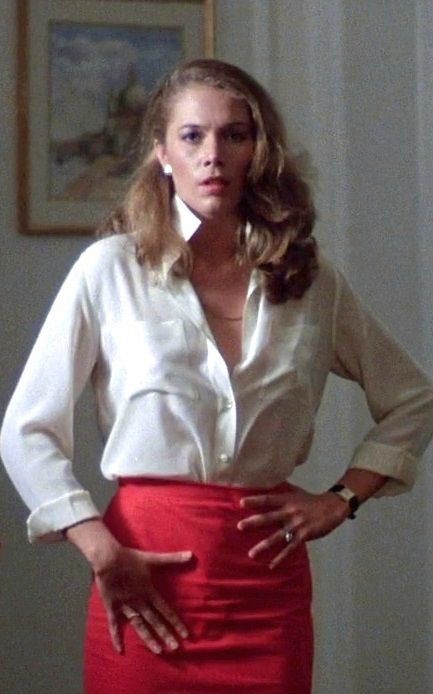 Directed and written by Lawrence Kasdan, the film is a reworking of Double Indemnity, but it improves on the original in the sense that we fully understand the visceral reasons why murder has occurred. That moisture between Turner's legs causes an electrical short in Hurt's brain. After subsequent sexual encounters, including an anal session that's implied but clear as day thanks to some clever visuals, he's hooked like a bluegill. For a guy just smart enough to get a law degree, but not bright enough to avoid being known as his town's worst lawyer, bedding Turner makes him feel godlike. Surely he can pull off murder and make it look like an accident. Directed and written by Lawrence Kasdan, the film is a reworking of Double Indemnity, but it improves on the original in the sense that we fully understand the visceral reasons why murder has occurred. That moisture between Turner's legs causes an electrical short in Hurt's brain. After subsequent sexual encounters, including an anal session that's implied but clear as day thanks to some clever visuals, he's hooked like a bluegill. For a guy just smart enough to get a law degree, but not bright enough to avoid being known as his town's worst lawyer, bedding Turner makes him feel godlike. Surely he can pull off murder and make it look like an accident.
Body Heat made Turner, Hurt, and Kasdan superstars, and did the same for a few of its below-the-line players. Turner went on to become one of the pre-eminent actresses of her generation; Hurt, who had starred in the brilliant but under appreciated Altered States, became one of Hollywood's top leading men; and Kasdan directed Silverado, The Big Chill, and other hits. Co-star Ted Danson also blew up, and Mickey Rourke parlayed a blazing supporting bit into a career as Hollywood's go-to rebel creep. You know any film that ignited five such careers is top notch, but as a post-noir entry Body Heat is also cinematically important. Not only did it finally lay bare the motivation behind all those noir murders and obsessions, but it did so with a reverent visual style and pitch perfect mood. We can't recommend it strongly enough.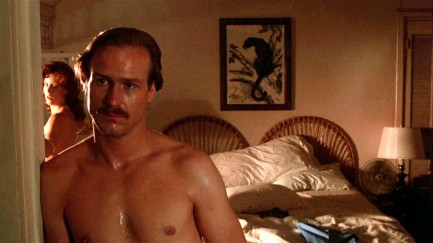 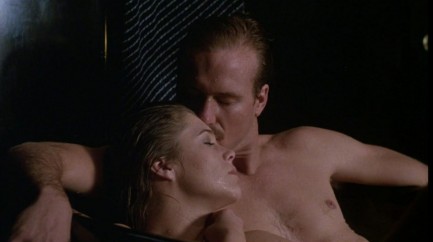 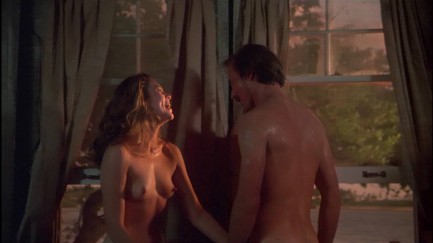 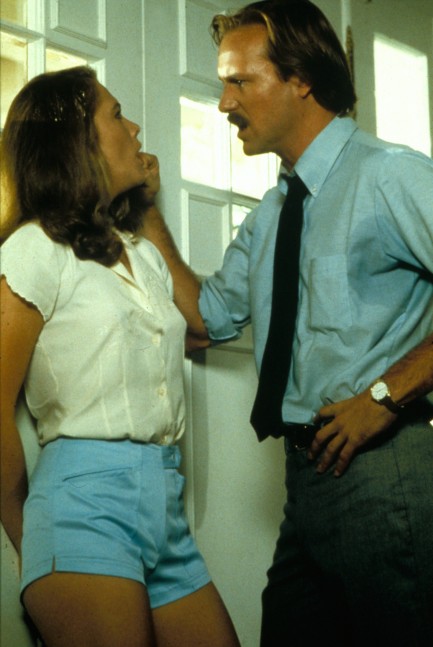  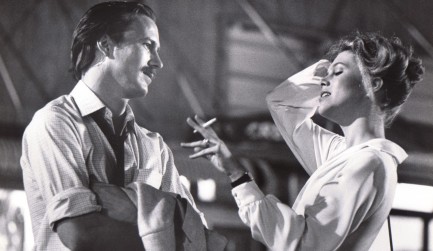 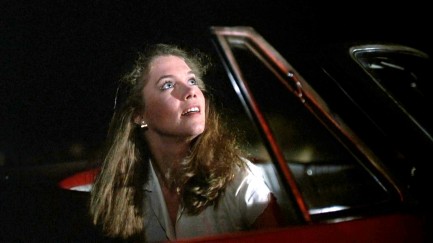 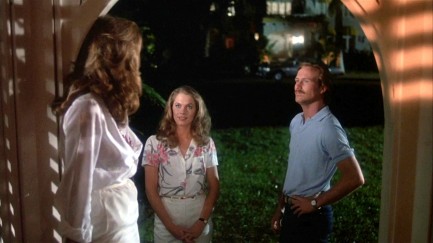 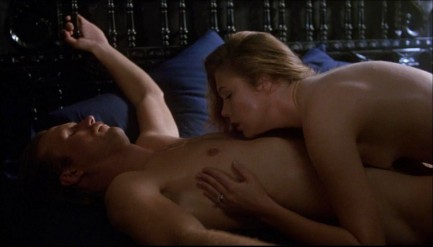 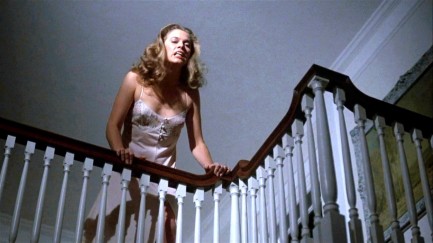 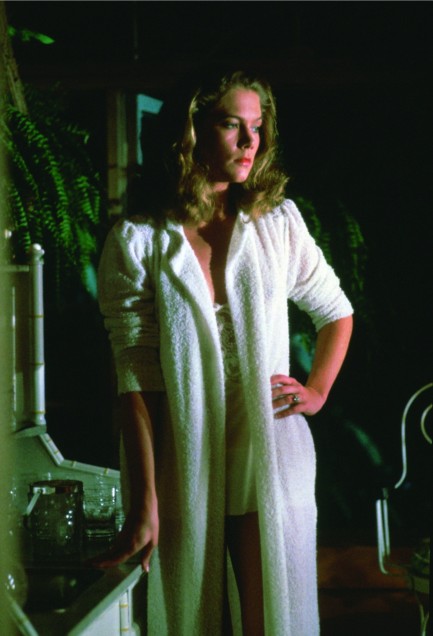  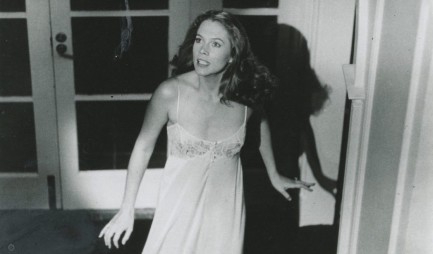 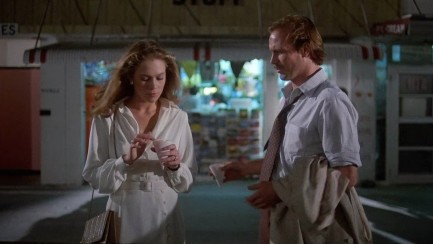 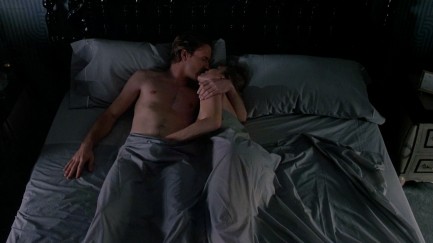 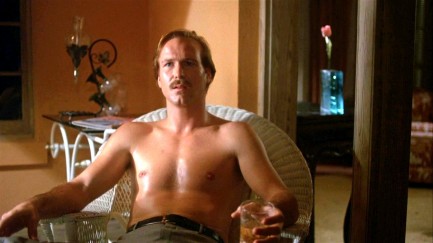 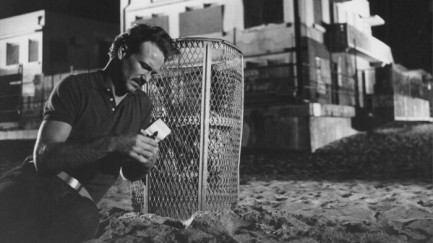 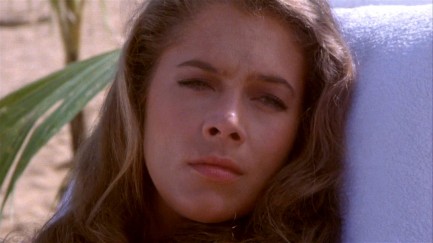 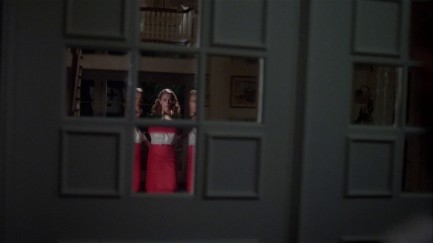 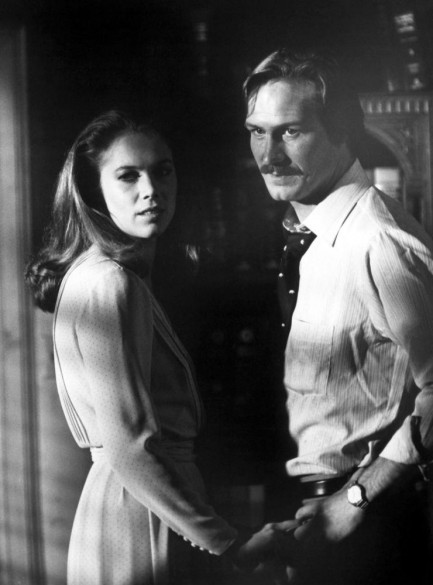 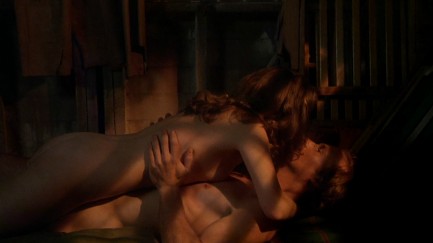 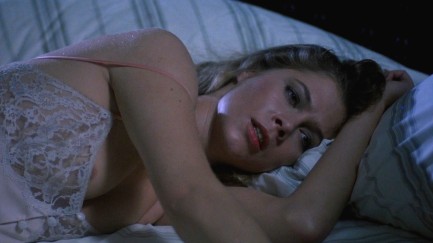 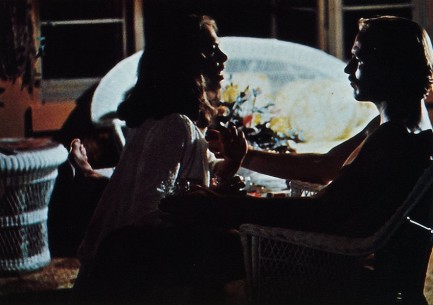 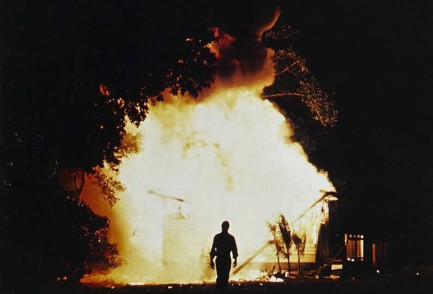 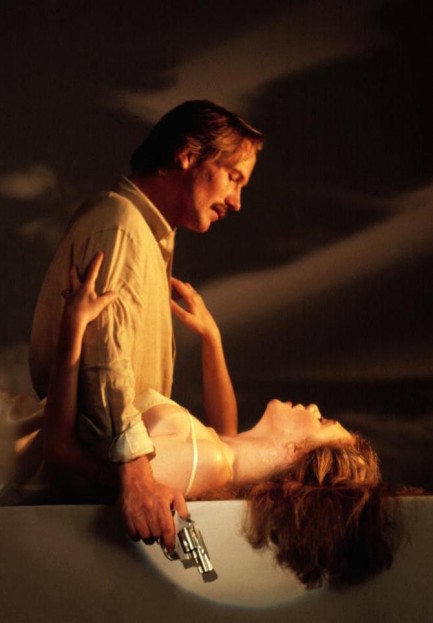  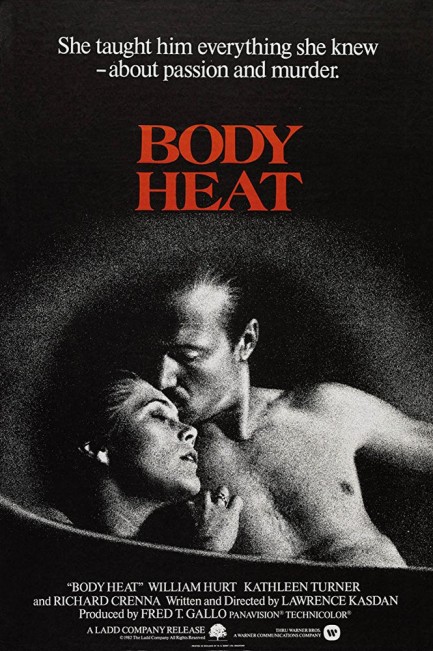
 Don't look at me you fool! Look at the menstrual cups! 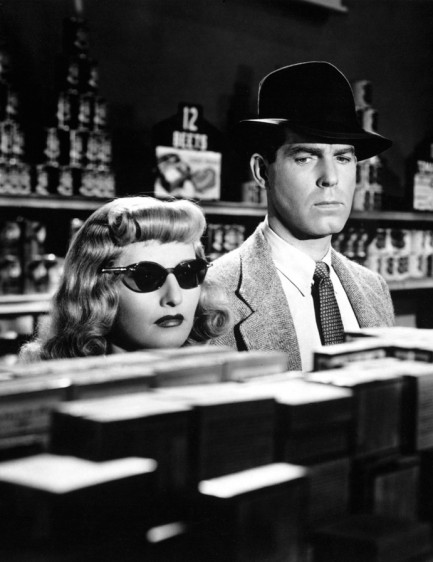
Above is a production still from the classic film noir Double Indemnity showing stars Barbara Stanwyck and Fred MacMurray trying to look like two random grocery shoppers who don't know each other. They're failing big time. But it's not because of the sunglasses and hat. It's because they're both in the feminine hygiene aisle. Well, not really. In the movie we never see what aisle they're in, but our interpretation could explain MacMurray's utterly baffled expression. Double Indemnity premiered today in 1944. And for you history buffs, menstrual cups premiered in stores in the 1930s.
|
 |

The headlines that mattered yesteryear.
2003—Hope Dies
Film legend Bob Hope dies of pneumonia two months after celebrating his 100th birthday. 1945—Churchill Given the Sack
In spite of admiring Winston Churchill as a great wartime leader, Britons elect
Clement Attlee the nation's new prime minister in a sweeping victory for the Labour Party over the Conservatives. 1952—Evita Peron Dies
Eva Duarte de Peron, aka Evita, wife of the president of the Argentine Republic, dies from cancer at age 33. Evita had brought the working classes into a position of political power never witnessed before, but was hated by the nation's powerful military class. She is lain to rest in Milan, Italy in a secret grave under a nun's name, but is eventually returned to Argentina for reburial beside her husband in 1974. 1943—Mussolini Calls It Quits
Italian dictator Benito Mussolini steps down as head of the armed forces and the government. It soon becomes clear that Il Duce did not relinquish power voluntarily, but was forced to resign after former Fascist colleagues turned against him. He is later installed by Germany as leader of the Italian Social Republic in the north of the country, but is killed by partisans in 1945.
|

|
|

It's easy. We have an uploader that makes it a snap. Use it to submit your art, text, header, and subhead. Your post can be funny, serious, or anything in between, as long as it's vintage pulp. You'll get a byline and experience the fleeting pride of free authorship. We'll edit your post for typos, but the rest is up to you. Click here to give us your best shot.

|
|






















 Directed and written by Lawrence Kasdan, the film is a reworking of Double Indemnity, but it improves on the original in the sense that we fully understand the visceral reasons why murder has occurred. That moisture between Turner's legs causes an electrical short in Hurt's brain. After subsequent sexual encounters, including an anal session that's implied but clear as day thanks to some clever visuals, he's hooked like a bluegill. For a guy just smart enough to get a law degree, but not bright enough to avoid being known as his town's worst lawyer, bedding Turner makes him feel godlike. Surely he can pull off murder and make it look like an accident.
Directed and written by Lawrence Kasdan, the film is a reworking of Double Indemnity, but it improves on the original in the sense that we fully understand the visceral reasons why murder has occurred. That moisture between Turner's legs causes an electrical short in Hurt's brain. After subsequent sexual encounters, including an anal session that's implied but clear as day thanks to some clever visuals, he's hooked like a bluegill. For a guy just smart enough to get a law degree, but not bright enough to avoid being known as his town's worst lawyer, bedding Turner makes him feel godlike. Surely he can pull off murder and make it look like an accident.
































































































